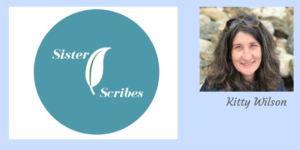Hello, it’s my turn again on the Sister Scribes and I thought seeing as I wrote about the structural editing last time, today I would go backwards and talk about how I begin a brand-new book.
The writing world is often divided into pantsters and planners, with a whole sliding scale in between. Pantsters are those writers that pick up a pen, or open the keyboard, and then just write into the void. I love doing this. It’s so exciting and you start the day never knowing exactly where the characters will take you. Whilst the start can be immediate and the writing often flows, the editing process is a lot longer as you tighten up the plot, ensure character continuity and fill any gaping holes that you didn’t notice whilst sprinting along.
Planning involves a lot more work before you start putting words on the page, you flesh out your characters, decide their strengths and weaknesses and become familiar with them and their back stories, plan the plot within an inch of its life so you don’t have massive rewrites to do later and know exactly what is happening where.
The very first book I ever wrote (unpublished), I did by pantstering. At that point I didn’t know if I could write anything other than academic essays and job applications, so was unsure as to whether a whole book was even possible. It didn’t cross my mind to plan, I started with an anecdote and went from there. It was so much fun! I also hit writers block, more so than any time since. I would write my characters into a corner and then have no idea how to get them out. I would sit at the laptop and try and write anything at all and see if it worked. I would then decide it was all rubbish and binge watch crime shows instead.
I now know this is actually standard operating procedure, and I spend the entire length of a book, from the first fifteen thousand words until the reviews come in, absolutely hating it, declaring it’s the worst book in the world and should never be allowed to see the light of day. My family are struggling to remain sympathetic, although have learnt the phrase ‘but you thought that about the last one’ is likely to initiate threats about eye-gouging (my favourite threat and absolute stand by).
These days, with tight deadlines and a determination to do as little structural editing as necessary, I am a converted planner. I start with an inkling of who the characters are going to be, their dominant personality traits and their flaws. Writing a series means that I tend to have mentioned them in previous books so take my cue from that. Then comes the stationary. I have a chalk wall, a great big whiteboard, notebooks galore and every colour post-it note pad imaginable. I draw diagrams, story maps and make swirly messes on huge sheets of paper with coloured felt-tips. I print out calendars and plan a timeline. I work out my beginning, my end and think about exciting middle bits and then take a deep breath before drawing out chapter plans, because I know if I have detailed chapter plans then writing will be an absolute breeze.
But then my butterfly mind kicks in, I look at all the bits and pieces surrounding me and think sod it and start to type.
I am a committed planner with a pantster heart. I write romantic comedy where we all know, heart wins every time.

